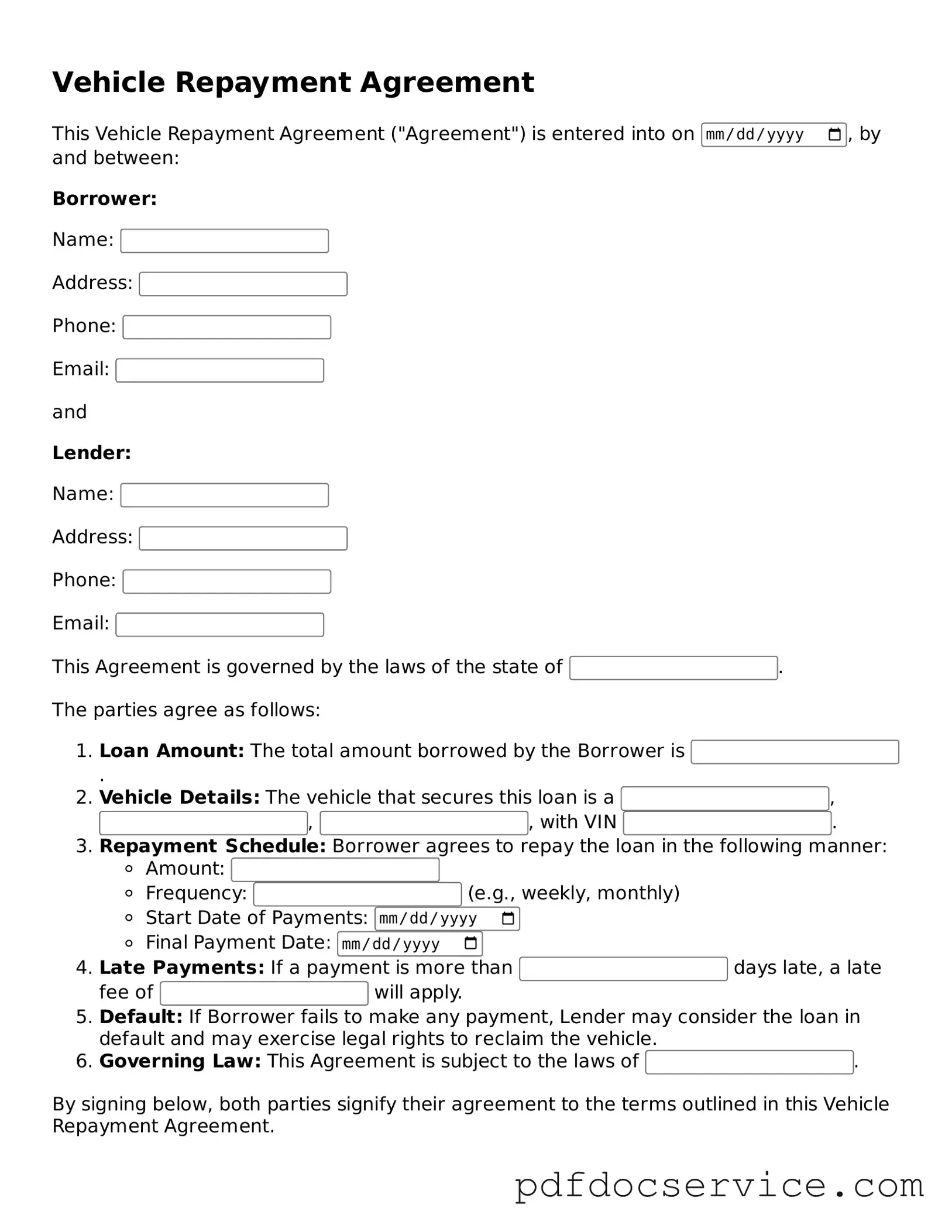A Vehicle Repayment Agreement form is a document used to outline the terms under which a borrower agrees to repay a loan taken out to purchase a vehicle. This agreement typically details the loan amount, interest rate, repayment schedule, and any other conditions relevant to the loan.
Anyone who has taken out a loan to purchase a vehicle may need to complete this form. This includes individuals who are financing a car through a dealership or a bank. The form helps ensure that both the lender and borrower have a clear understanding of their obligations.
The Vehicle Repayment Agreement form generally requires the following information:
-
The full name and contact information of the borrower.
-
The name of the lending institution or individual.
-
Details about the vehicle, including make, model, and VIN (Vehicle Identification Number).
-
The total loan amount and interest rate.
-
The repayment schedule, including due dates and payment amounts.
-
Any additional terms or conditions related to the loan.
What happens if I miss a payment?
Missing a payment can have several consequences. First, the lender may charge a late fee. Additionally, repeated missed payments can negatively impact your credit score. In some cases, the lender may initiate repossession of the vehicle if payments are not made as agreed. It’s essential to communicate with the lender if you anticipate missing a payment to explore possible options.
Can I modify the terms of the Vehicle Repayment Agreement?
Yes, it is possible to modify the terms of the Vehicle Repayment Agreement, but both parties must agree to any changes. This usually involves drafting an amendment to the original agreement. Ensure that any modifications are documented in writing and signed by both the borrower and the lender to avoid misunderstandings in the future.
Is the Vehicle Repayment Agreement legally binding?
Yes, once signed by both parties, the Vehicle Repayment Agreement is legally binding. This means that both the borrower and the lender are obligated to adhere to the terms outlined in the agreement. If either party fails to fulfill their obligations, the other party may have legal recourse.
You can typically obtain a Vehicle Repayment Agreement form from various sources, including:
-
Financial institutions or banks that offer auto loans.
-
Dealerships that provide financing options.
-
Online legal document services that offer customizable templates.
Always ensure that the form you use complies with your state’s laws and regulations.
